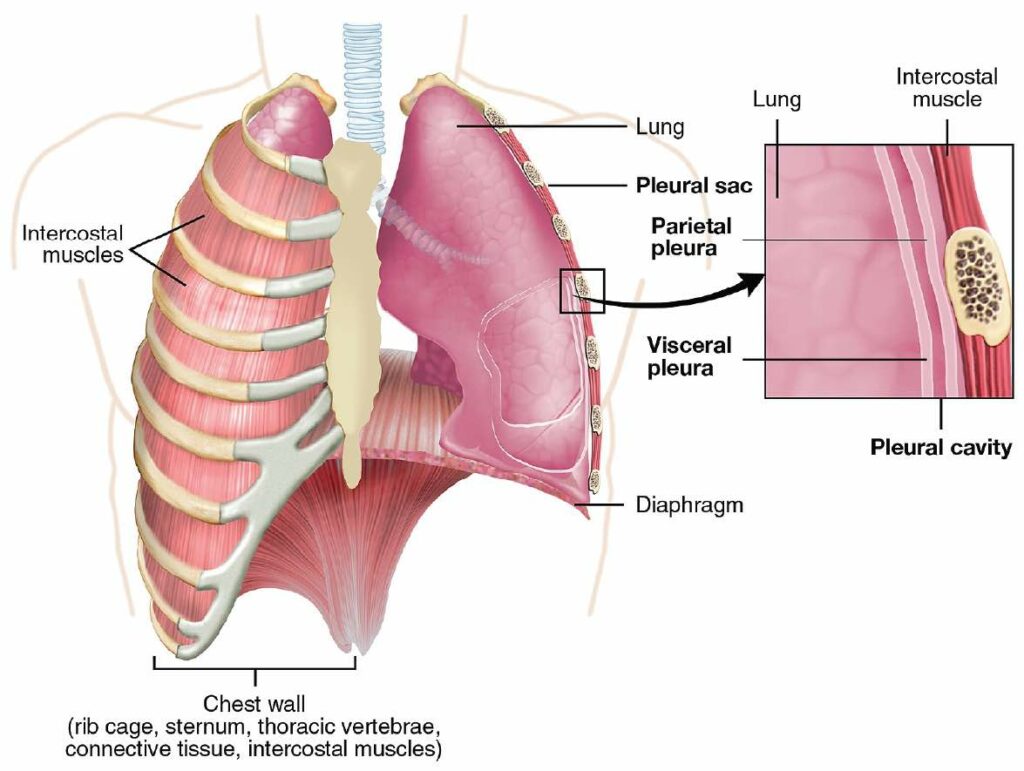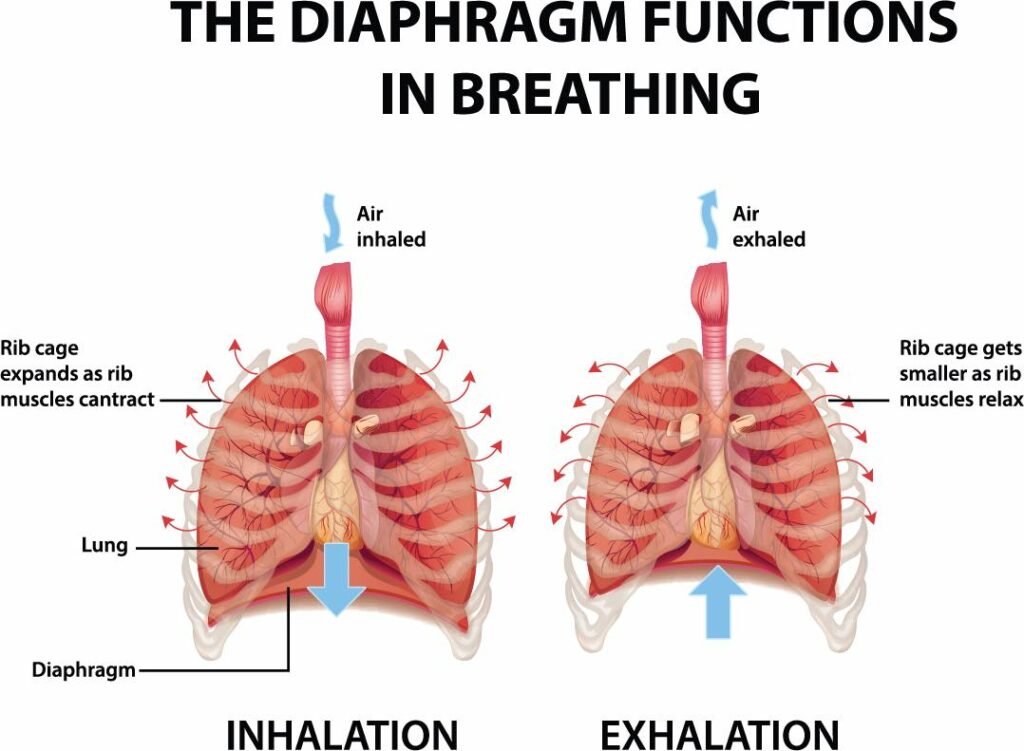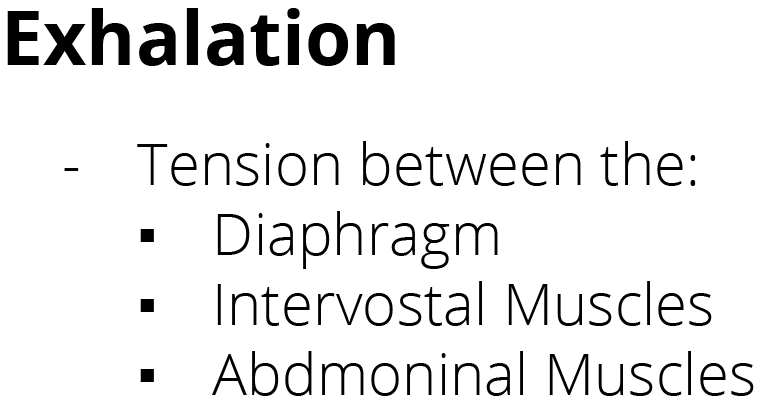Being able to breathe freely and easily is the foundations of all flute playing, but can be quite a confusing subject to understand. We all know that breathing for flute players is vital for creating a sound on the flute but sometimes the technical descriptions and awkward references to the diaphragm can leave us feeling lost. When the average person thinks about breathing, they will most often think abut only drawing in the air, with the expulsion of the air taken for granted.
For a flute player, and indeed any musicians that plays a wind instrument, every aspect of breathing is important. We could describe the breathing technique within a three step process:
- The inhalation
- Suspension
- The exhalation
Out of these three steps, the exhalation is the most important as it is what will set us up for and produce a good tone.
A good flute player will be able to control the exhalation of air with the lungs abdominal muscles and diaphragm before the air stream even reaches the embouchure.
Before going further lets look at what the diaphragm actually is. You may have heard references to this in almost all of your lessons but may not understand what it is.
The Diaphragm
The diaphragm is a muscle that sits underneath your rib cage and is above your liver and stomach.

When you are relaxed and have breathed out the diaphragm is in it’s relaxed position. This is up, following the natural curvature of the base of the lungs.
When you breathe in, the diaphragm contracts. When it contracts, it flattens and moves down. In the position the chest cavity has expanded and the lungs are expanded.

The diaphragm is of course vital to developing breath control but even looking at the diagrams above and knowing where it is in the body it is still difficult to understand how it can be used when developing breath control.
I will let you into a secret… when most flute teachers talk about the diaphragm they are usually referring to the abdominal muscles.
When a flute teacher mentions the word support this is referring to the diaphragm and the abdominal muscles working together to control the rate and pressure of the air being released.
The Three Stages of Breathing for flute Players
You might be thinking, how can there be three stages to breathing for flute players? I breathe in and then I breathe out! However, there is a lot more to good breathing and developing the control needed for a great sound. Let’s get in to it:
Inhalation
The most obvious stage is inhalation, the act of drawing air into the body. To do this, you must open your mouth with a relaxed jaw, as if you are saying ‘Ah’ and allow the air to fill you lungs. You should feel your torso expand, both in the front and the back. What should not expand is your chest area and your shoulders should not rise.
As we saw earlier, when you breathe in the diaphragm moves downwards. This movement reduces the pressure in the lungs, meaning that the pressure outside of the body exceeds the pressure inside and allows the air to rush in.
Suspension
This is the shortest step, no more than a second, but is vital for preparing to exhale. Before exhaling, you are simply holding this breath (suspending the breath!). By doing this you set the body up for the exhalation.
You want to make sure that in this step you are keeping your throat open and the torso expanded and set up your muscles to support the sound you are about to produce.
By setting yourself up for the exhale, you can ensure that you prevent yourself feeling dizzy but most importantly you will prevent a breathy tone that quickly loses its resonance. Imagine a balloon deflating very quickly, this is what you will prevent!
Exhalation
This stage is the most important for breathing for flute players. In order to control this stage of breathing, you use the tension between the diaphragm, intercostal muscles and the abdominal muscles. By controlling everything you can exhale slowly through the embouchure hole (lips) with no problem.

Now there is one important aspect of breathing which we have not yet touched upon and that is posture.
Posture
Having good posture means that your body is in the best position for breathing and therefore creating a great tone.
By having a good posture, we allow the air to flow in unimpeded as you will reduce the tension in your body. If you are more relaxed, you will find the air flowing in and out much easier, it will also be easier to take a deep breath.
When we play the flute we can either be standing up or sitting down and the posture you adopt in both can make a big difference.
When standing you should be upright with your feet firmly placed on the ground, with one foot slightly in front of the other as this will keep you the most balanced. Ensure that your shoulders are relaxed and that your chin is parallel to the ground so that the air way can be kept completely open.
Make sure to turn your head slightly to the left and bring the flute the rest of the way. By bringing the flute to your face rather than the other way around, you will ensure that your body does not twist. The position of your head is very important.

When sitting we have similar principles except you don’t need to worry about the bottom half of your body as much. Just ensure that you do not cross your legs as this will constrict your abdominal muscles and as we have seen earlier, these need to be relaxed.
Keep upright with your chin parallel to the floor as we saw with the standing posture. You will still turn head to the left and bring the flute the rest of the way as this will allow your body to stay in a relaxed position.

Keeping your posture secure while playing will also allow you to breathe right down into the bottom of your lungs, avoiding chest breathing. Breathing into the chest can lead to your sound being constricted but also, put simply you cannot contain as much air simply in your chest!
Breathing exercises
The next thing is to try and put this all together. There are a few exercises that can be beneficial when trying to improve your flute breathing and indeed your lung capacity for flute playing.
Having an aspect of aerobic exercise in your day is great for any flute player as this will greatly improve your lung capacity and ability to breathe in more air!
Swimming and yoga and both great activities to do as they have a huge focus on breath with movement and this applies so well to our flute playing. Even just a short 5 minute yoga session is hugely beneficial to your flute playing and improving your breathing.
Another great place to start is simply breathing in a very straight away. Stand tall with one hand placed gently on your stomach one placed gently on your back, slowly breathe in and out ensure that your posture stays relaxed.
As you do this, you should feel your torso expand and contract both in the front and the back. You can then gradually increase the speed at which you are breathing until you are essentially panting.
Other breathing exercises you can try include:
- Using a heavy (ish!) book, lie on the floor and place the book on your abdomen. Using slow and controlled breathing watch the book move up and down as you breathe in and out. This is a great visual practice to do to help you control your breathing. It will help you to develop long slow diaphragmatic breaths that really fill your lungs. Aim to breathe in for a few seconds, hold and then breathe out slowly.
- It is also great and very beneficial to mix up the exercise we saw above. Try seeing if you can make the book rise as you exhale and lower as you inhale. This is opposite to what your body naturally wants to do and so it can help you take deeper breaths and exhale with a much more steady stream – perfect for flute playing!
- We can also do a similar exercise using our flute case up against a wall. This one will create slightly more pressure, as you will lean into your flute case and actively use your diaphragm and abdominal muscles as you breathe in to push yourself away. This again helps you to be more aware of how your breathing works but it will also improve the control in your breathing as well as the strength in your abdominal muscles.
- This next breathing exercise is great as it specifically targets improving your lung capacity. To start with, we keep it simple. Set your metronome to crotchet = 60, this is the exact time of the second hand on a clock so if you do not have access to a metronome then just use the clock! Inhale for four counts, hold this for four counts and then exhale in a steady stream for four counts. Gradually increase this to eight counts and then begin extend the length of time you blow out for! Doing this will help to develop your control.
By doing these breathing exercises, most people will find that they will more effectively fill their lungs, develop the ability to exhale slowly, expand their lung capacity, have a more reliable breath control and ultimately hugely improve their flute playing.
Imagine, with better breath control will come a huge improvement in your playing. Particularly when it comes to playing those long flute phrases!
Time Your Breathing
For best results and to keep you motivated make sure you record your results of these exercises. Keep a diary of every exercise you do. How many counts did you breathe in for? Hold for? Breathe out for? By recording this you will just how much your breath control has improved.

How do you practice your breath control? There are many more exercises out there and I would love to hear what you do to improve your breathing for flute playing!
Developing breath control, learning how to exhale slowly through the embouchure, using all the air effectively will greatly improve your ability at playing flute. Most notably your sound will improve as the breath is developed, but you will also see a huge improvement in other aspects of your playing such as finger dexterity. This is due to your body having less tension along you to play more freely.
What’s next…?
- Get the perfect intonation on the flute
- Expand your repertoire with our top flute solos for intermediate players
